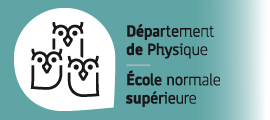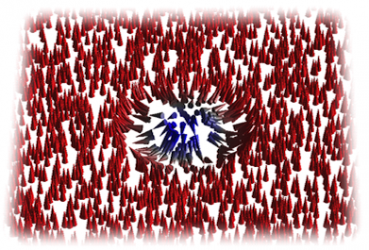Matthieu Wyart (NYU) — June 25, 2015 Complex systems are characterized by an abundance of meta-stable states. This is the case for granular materials, that can flow until one jammed configuration (among the exponentially many possible ones) is (...) | ↦ Lire la suite
 Les laboratoires de recherche
Les laboratoires de recherche



 Le département de physique
Le département de physique

 Fête de la Science 2018
Fête de la Science 2018 































